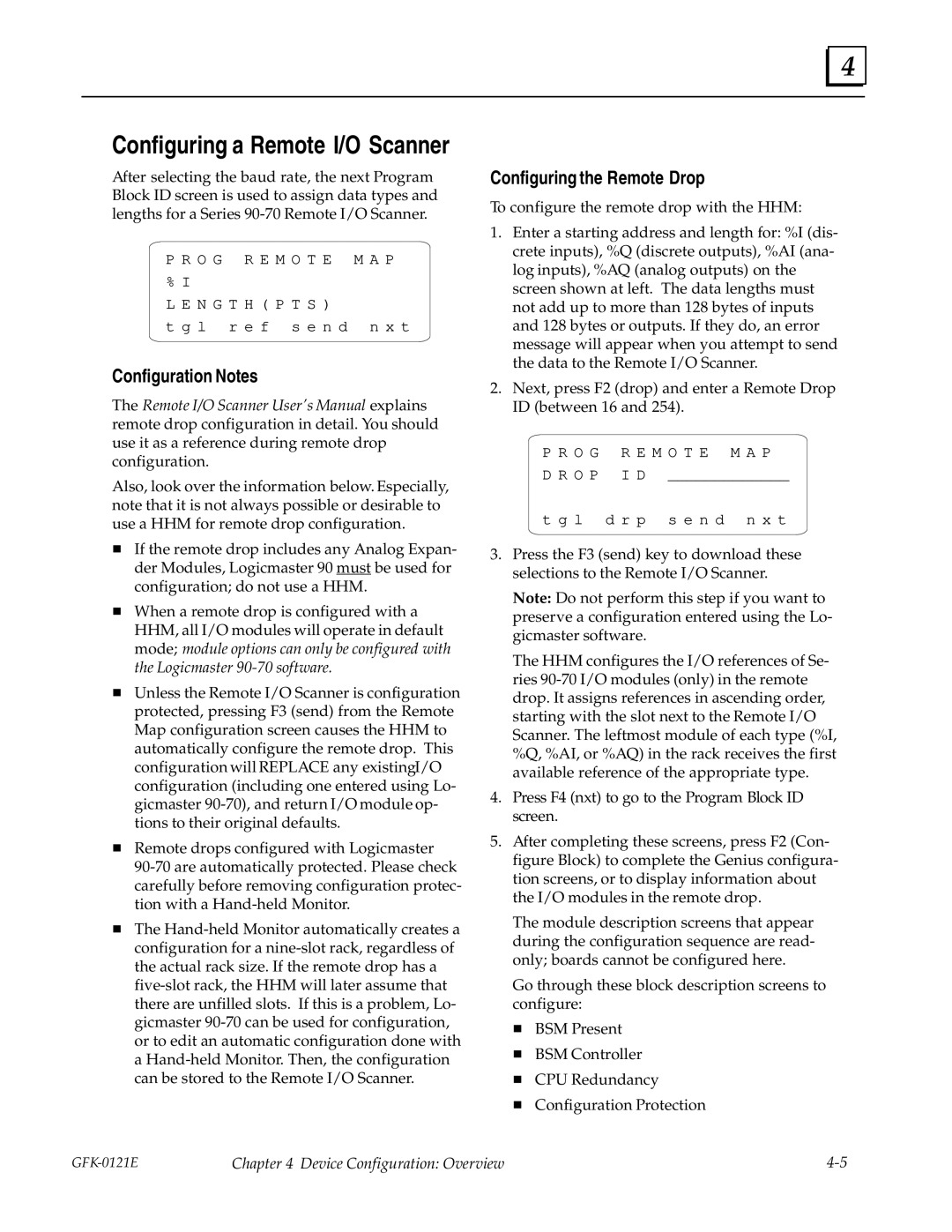
4
Configuring a Remote I/O Scanner
After selecting the baud rate, the next Program Block ID screen is used to assign data types and lengths for a Series
P R O G R E M O T E M A P % I
L E N G T H ( P T S )
t g l r e f s e n d n x t
Configuration Notes
The Remote I/O Scanner User's Manual explains remote drop configuration in detail. You should use it as a reference during remote drop configuration.
Also, look over the information below. Especially, note that it is not always possible or desirable to use a HHM for remote drop configuration.
HIf the remote drop includes any Analog Expan- der Modules, Logicmaster 90 must be used for configuration; do not use a HHM.
HWhen a remote drop is configured with a HHM, all I/O modules will operate in default mode; module options can only be configured with the Logicmaster
HUnless the Remote I/O Scanner is configuration protected, pressing F3 (send) from the Remote Map configuration screen causes the HHM to automatically configure the remote drop. This configuration will REPLACE any existingI/O configuration (including one entered using Lo- gicmaster
HRemote drops configured with Logicmaster
HThe
Configuring the Remote Drop
To configure the remote drop with the HHM:
1.Enter a starting address and length for: %I (dis- crete inputs), %Q (discrete outputs), %AI (ana- log inputs), %AQ (analog outputs) on the screen shown at left. The data lengths must not add up to more than 128 bytes of inputs and 128 bytes or outputs. If they do, an error message will appear when you attempt to send the data to the Remote I/O Scanner.
2.Next, press F2 (drop) and enter a Remote Drop ID (between 16 and 254).
P R O G R E M O T E M A P
D R O P I D | _____________ |
t g l d r p | s e n d n x t |
|
|
3.Press the F3 (send) key to download these selections to the Remote I/O Scanner.
Note: Do not perform this step if you want to preserve a configuration entered using the Lo- gicmaster software.
The HHM configures the I/O references of Se- ries
4.Press F4 (nxt) to go to the Program Block ID screen.
5.After completing these screens, press F2 (Con- figure Block) to complete the Genius configura- tion screens, or to display information about the I/O modules in the remote drop.
The module description screens that appear during the configuration sequence are read- only; boards cannot be configured here.
Go through these block description screens to configure:
H BSM Present
H BSM Controller
H CPU Redundancy
H Configuration Protection
Chapter 4 Device Configuration: Overview |
